This homemade tahini recipe is so easy to make, and it makes super creamy tahini that tastes much better than anything you can buy at the store. It’s ready in less than 15 minutes!
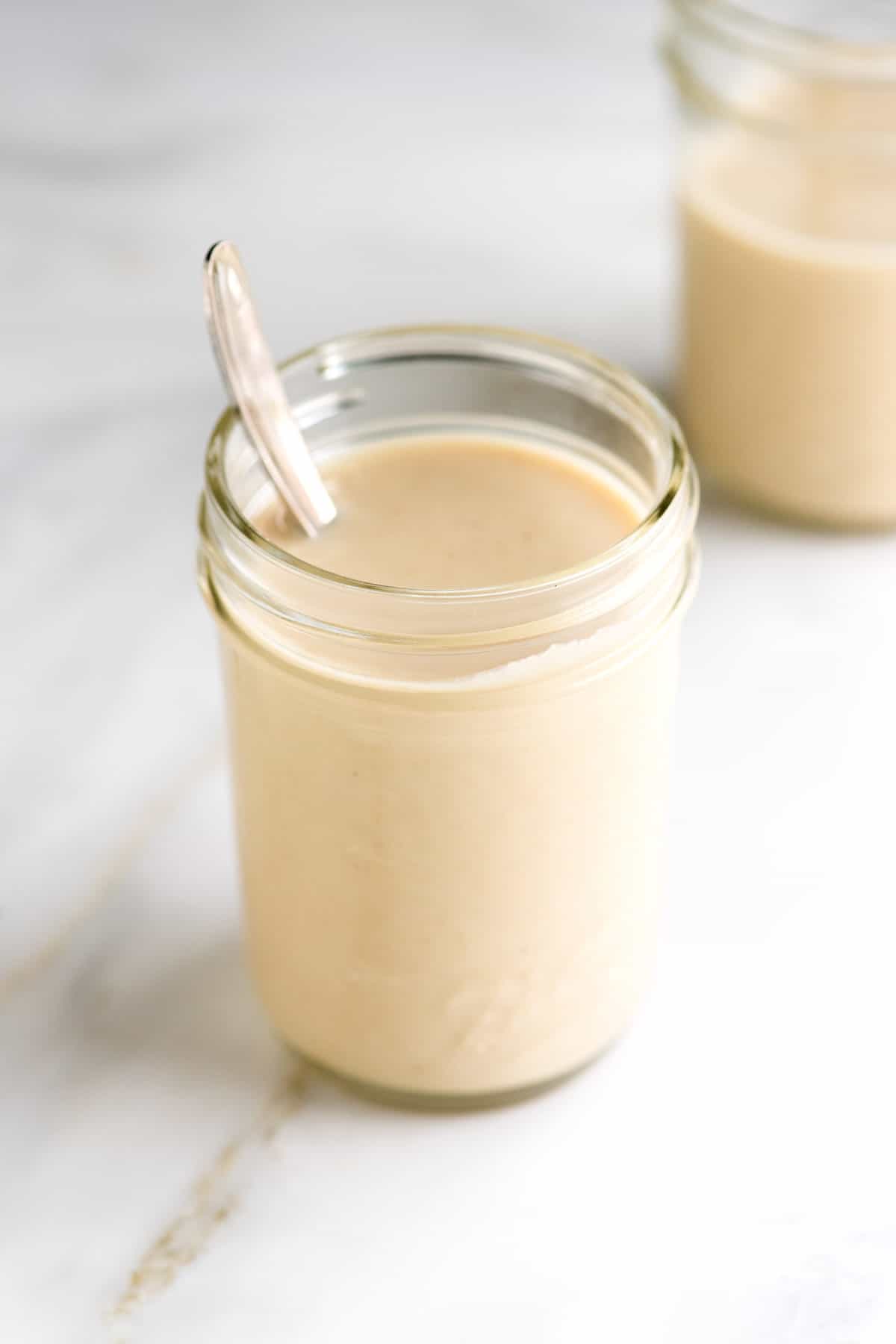
Tahini is a paste made from sesame seeds. It is a staple in many cuisines, especially in the Mediterranean and the Middle East. It’s vegan, gluten-free, tastes nutty, and is incredibly simple to make.
Store-bought jars of tahini can be expensive. Homemade tahini is not only cheaper, but it also tastes amazing. You can use tahini to make homemade hummus, my favorite tahini dressing, creamy tahini sauce, and more!
Key Ingredients
- Sesame seeds: I use hulled seeds (pictured below on the left) and toast them in a dry skillet to bring out their natural nuttiness.
- Oil: I add a few tablespoons of neutral-flavored oil to help the tahini turn into a creamy smooth paste. Try avocado oil, extra-virgin olive oil, or vegetable oil. Sesame oil (not toasted sesame oil) also works.
- Salt: Optional, but I always use it. It just makes the tahini taste better.
How to Make Homemade Tahini
Tahini is incredibly simple to make. You will grind sesame seeds in a food processor with some oil until smooth. If you’ve ever made nut butter like almond butter or homemade peanut butter, the process is very similar.
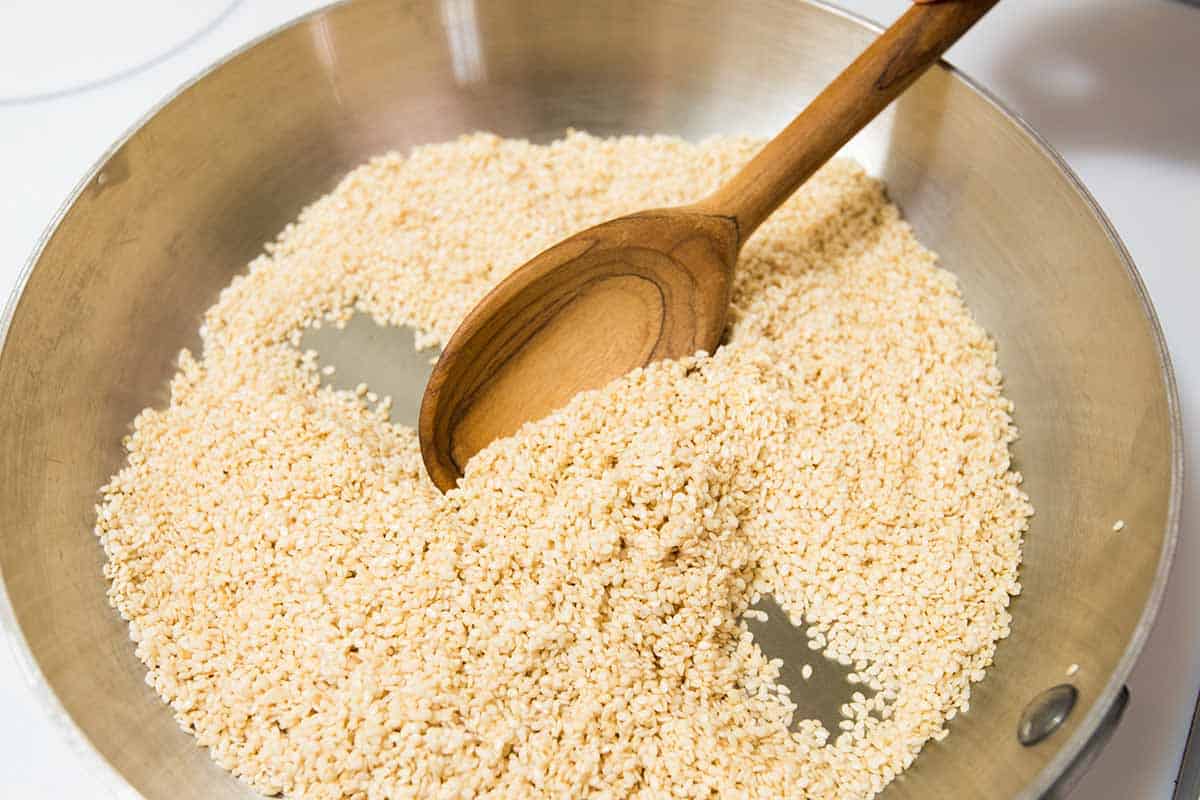
Toasted sesame seeds make our tahini taste even better! Toast them in a dry skillet over medium-low heat, stirring often and watching them closely until they turn golden.
Toss your toasted seeds into the food processor. Process until they form a crumbly paste. A powerful food processor helps, but most standard ones will work, too. (I’ve included tips for using a blender below the recipe.) It’s going to go through a few stages. First, the seeds break down into a crumbly mixture that honestly doesn’t really look like it’s going to turn into tahini. Then, it eventually breaks down even more and becomes the creamy tahini we are looking for.
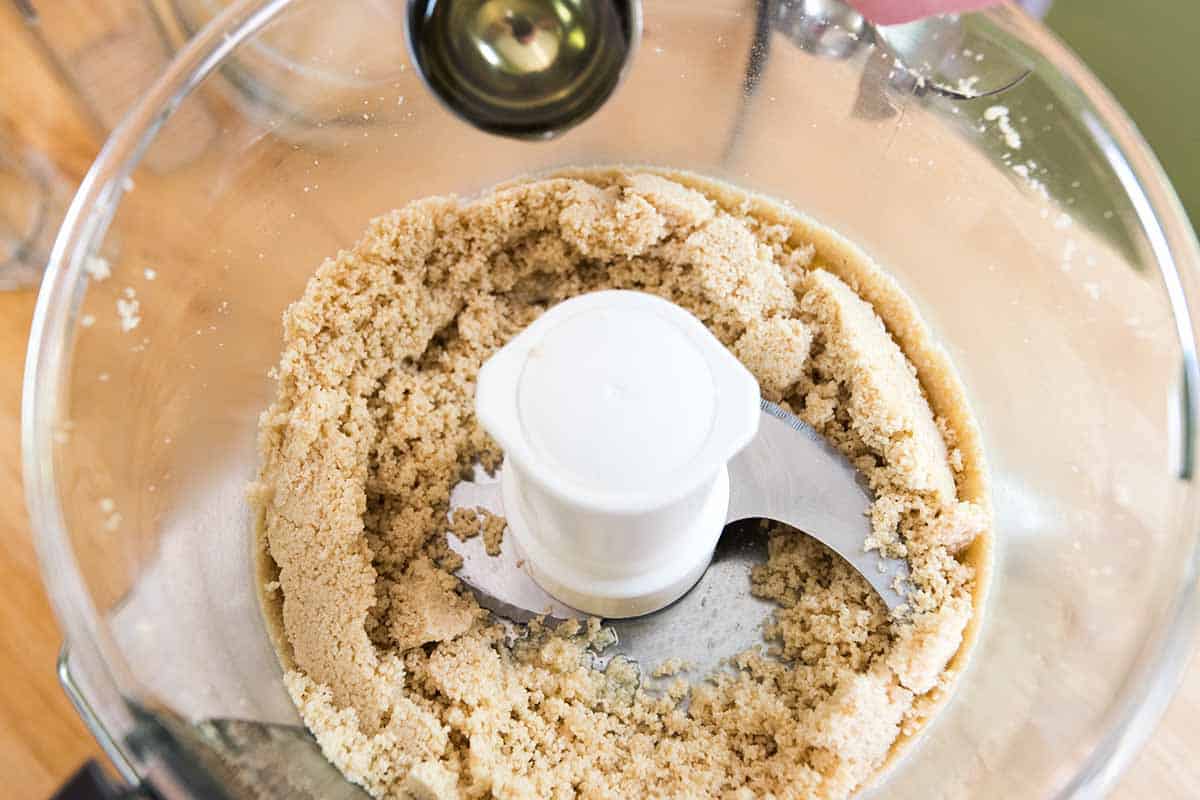
Adding a few tablespoons of mild-tasting oil is helpful. This helps the tahini become more smooth, creamy, and drippy. You can use less oil, but the tahini won’t be as easy to pour. I find 3 to 4 tablespoons perfect for a texture like store-bought tahini. Process a bit more, scraping down the bowl as needed, and your tahini is now ready to use!
Ways to Use Tahini
The most well-known way to use tahini is to make hummus, but we use it in our kitchen in many other ways. We use tahini to make other dips like baba ganoush (a roasted eggplant dip) and serve it plain next to homemade falafel.
It’s also the perfect base for sauces and dressings. Look at our tahini salad dressing or this creamy tahini sauce with lemon and garlic. I also use that creamy sauce for this tahini kale salad, a dip for our garlic asparagus, these chicken lettuce wraps, and a drizzle for honey roasted carrots.
You can even use tahini for desserts. Seriously. Drizzle over ice cream or use it instead of peanut butter or butter in your favorite cookies. Once you have tahini in your fridge (it lasts over a month), we bet you will find yourself adding it to a variety of dishes without direction from us!
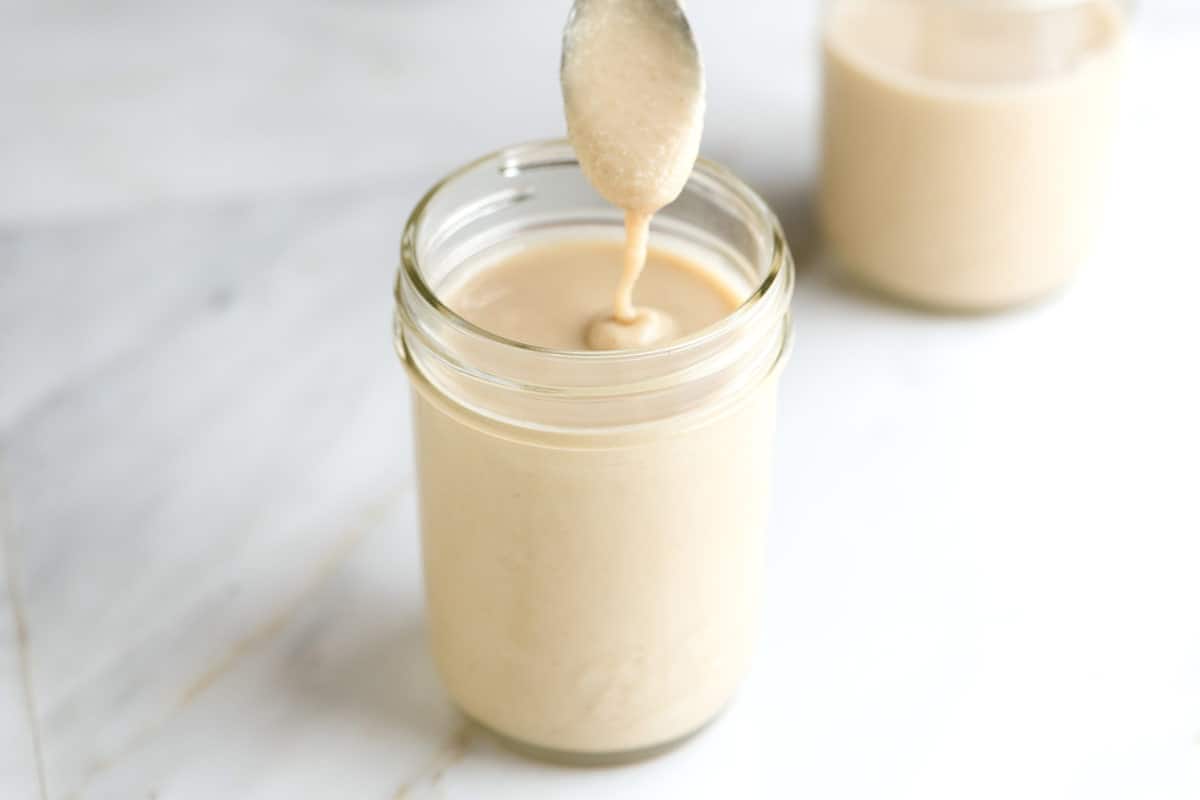
Easy Tahini
- PREP
- COOK
- TOTAL
Making tahini at home is easy and cheaper than buying it from the store. I also think it tastes better! For the best deals, look for sesame seeds in bulk bins or at International, Asian, and Middle Eastern markets.
While you can make tahini from unhulled, sprouted, or hulled sesame seeds, we prefer hulled seeds.
Watch Us Make the Recipe
You Will Need
1 cup (140g) sesame seeds, we prefer hulled
2 to 4 tablespoons neutral flavored oil such as avocado, grape seed, vegetable or a light olive oil
Pinch of salt, optional
Directions
1Add sesame seeds to a wide, dry saucepan over medium-low heat and toast, stirring constantly, until the seeds become fragrant and turn light golden, 3 to 5 minutes. Stay close and keep stirring, as the seeds can burn quickly.
2Add the toasted sesame seeds to the bowl of a food processor, then process until a crumbly paste, about 1 minute.
3Add 2 tablespoons of the oil, then process for 2 to 3 minutes more, stopping to scrape the bottom and sides of the food processor a couple of times.
4Check the tahini’s consistency. It should be smooth, not gritty, and should be pourable. You may need to process for another minute and add 1 to 2 more tablespoons of oil.
5Taste the tahini for seasoning, then add salt to taste. Process 5 to 10 seconds to mix.
6Store tahini in an airtight container in the fridge for one month.
Adam and Joanne's Tips
- Storing: Keep tahini in an airtight jar in the refrigerator for a month. After some time in the fridge, it might separate like natural peanut butter. To fix this, stir it well before using it.
- Sprouted and black sesame seeds: You can make tahini from sprouted or black sesame seeds. If you have sprouted your seeds at home, make sure that you dry and toast them before making the tahini.
- Unhulled sesame seeds: Tahini made from unhulled sesame seeds tastes more bitter and isn’t as smooth as when made from hulled seeds. I recommend using hulled seeds.
- Sesame seeds not processing: The sesame seeds take a minute or two to start breaking down (watch our video for reference). If your seeds are whirling around your processor bowl, you may need a higher-powered processor, or the blade may be sitting above the seeds. If you think this is the case, try increasing the sesame seeds in the bowl.
- Blender: I prefer using my food processor, but if you have a high-powered blender, you should be able to make tahini. As you blend, stop and scrape down the sides and bottom of the blender to incorporate all the seeds.
- The nutrition facts provided below are estimates.

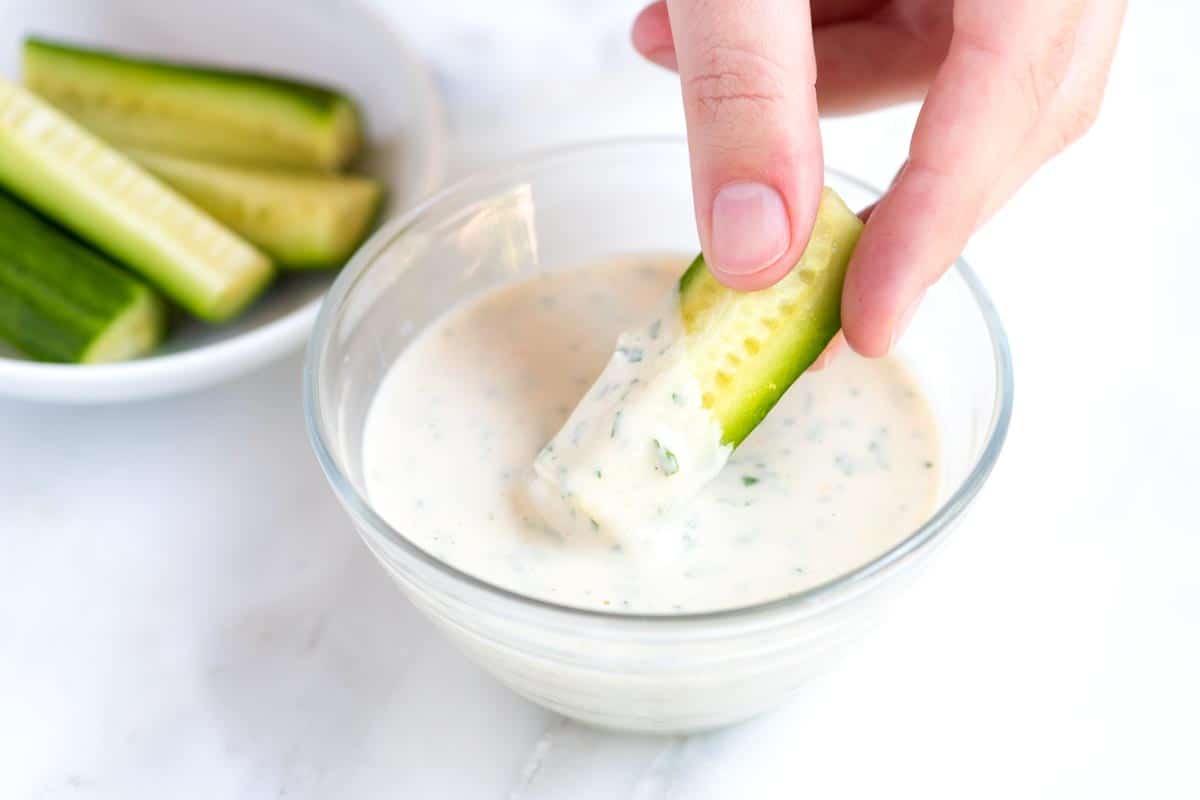
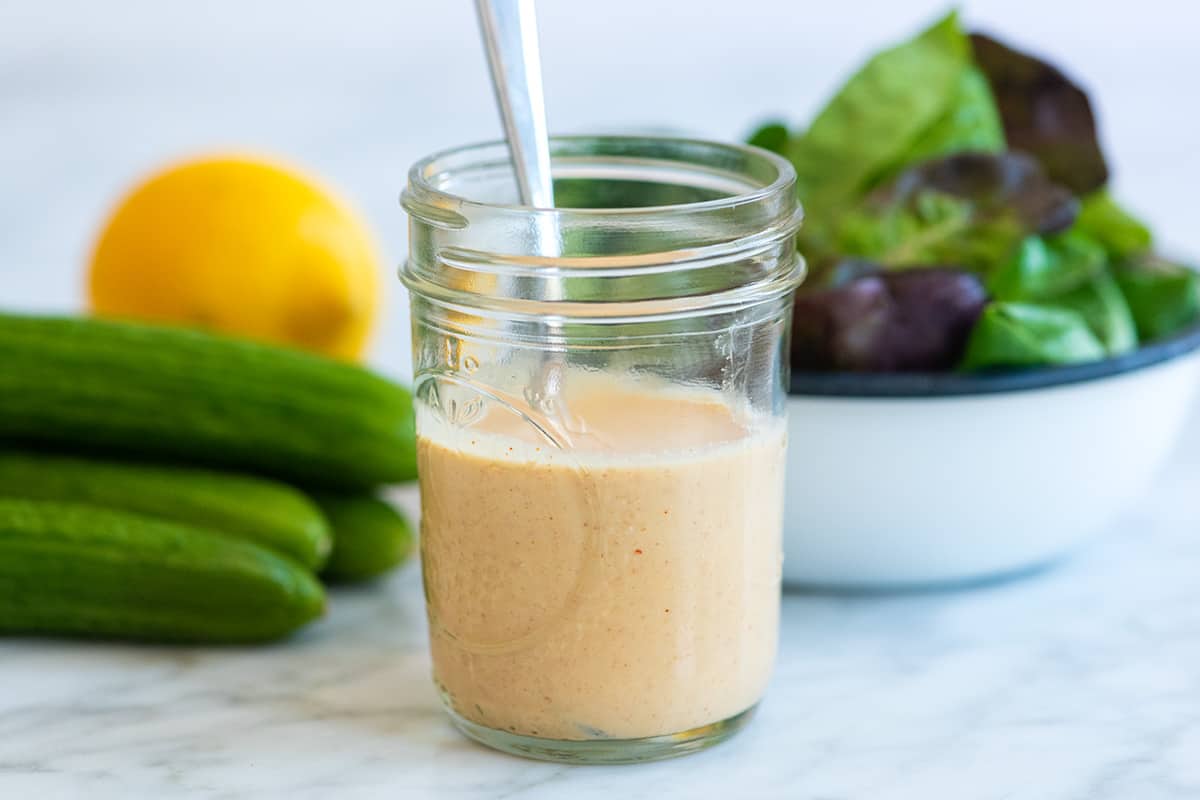
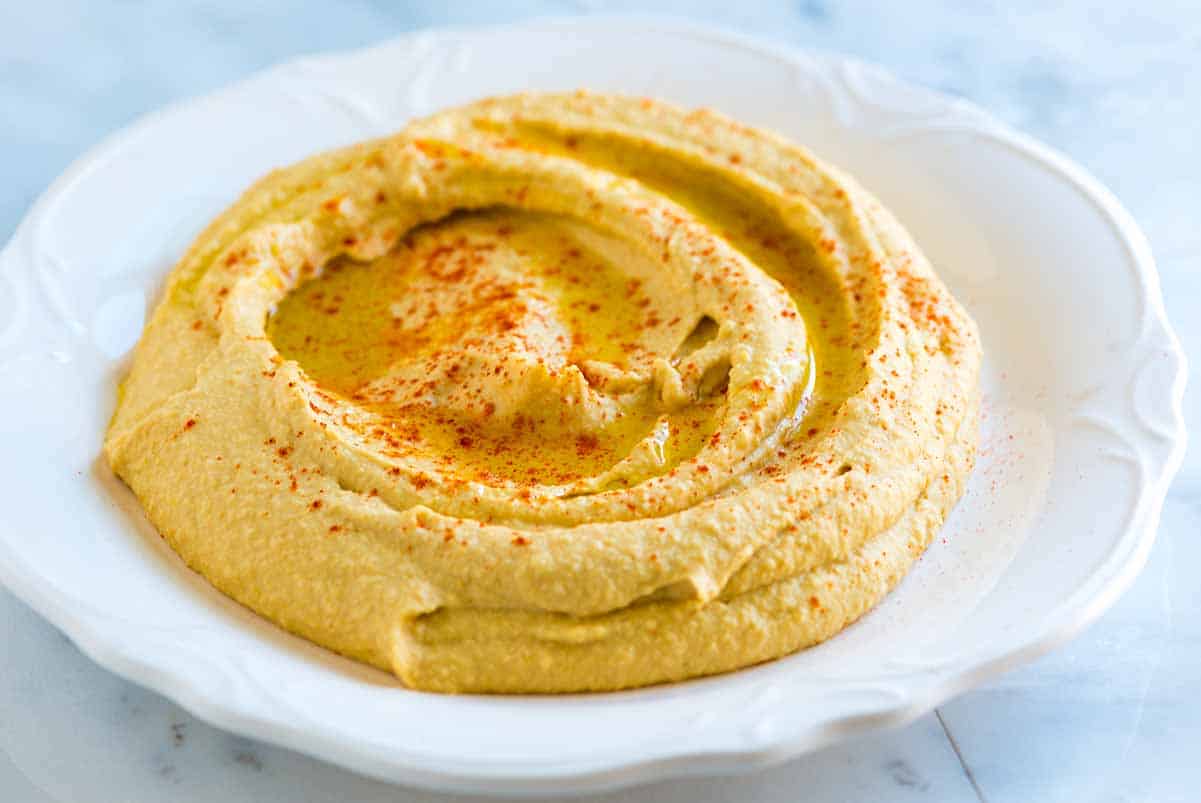
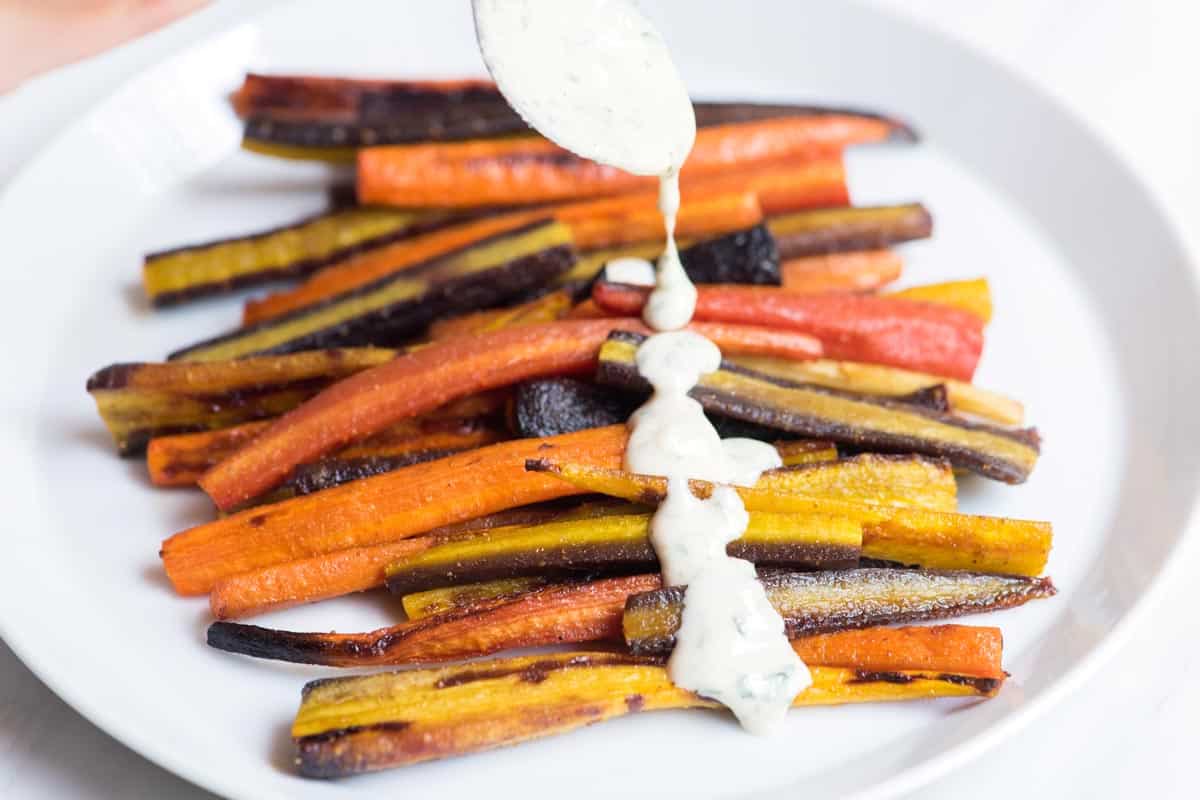

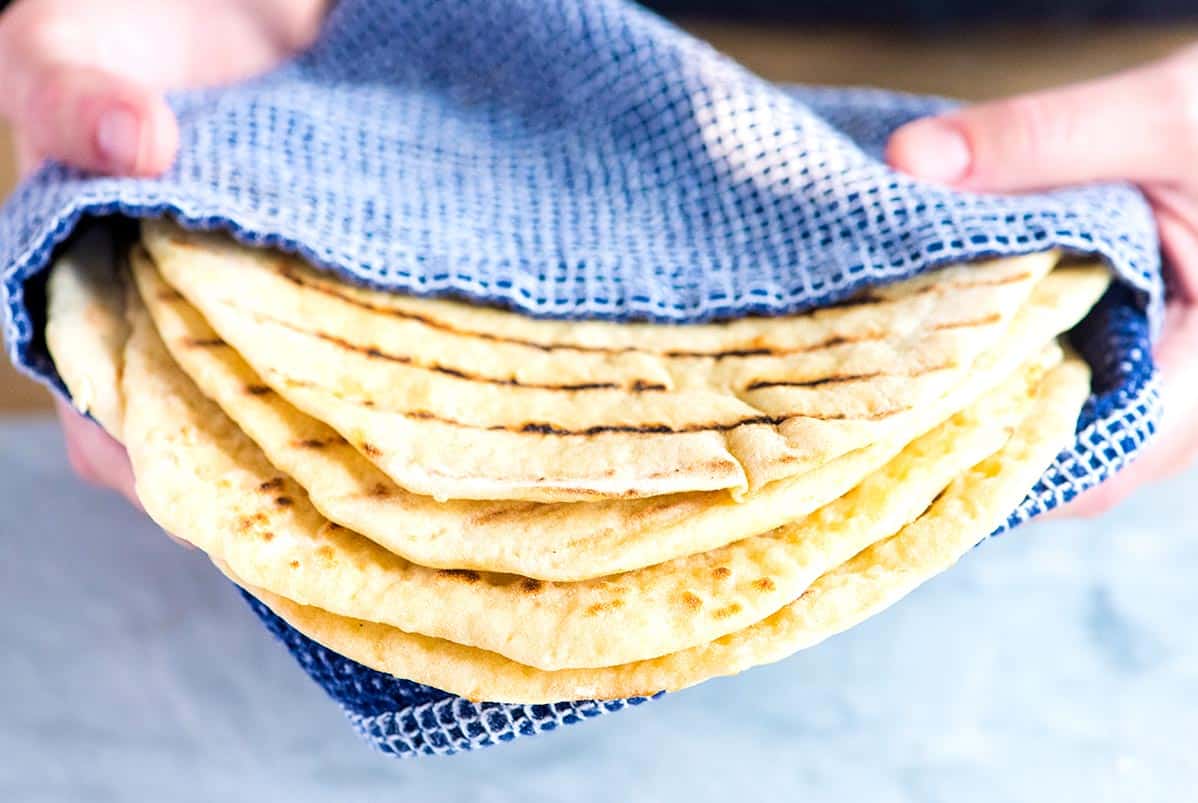


Can we grind the sesame seeds in a grinder? and Also the Serving size is only 1 tablespoon, I think that’s a mistake?
The tablespoon was for sharing nutritional facts. You can increase as necessary.
This is a GREAT basic recipe, since I’m a cook (so to speak) I will tweak it to my taste, but this recipe is damn good. Thanks
That’s great, Aram! Thanks for coming back.
Hi. This is my go to recipe Thanks!! Quick question — each time i make it, it is much “browner” than the image you show. Am I browning too much. I just browned for 3.5 minutes. Thanks Lisa
It might be because you browned the sesame seeds a little longer than us. That is perfectly fine as long as you don’t burn them. We love a toasty tahini 🙂
Delicious and easy, but it took more than 4 tablespoons of oil (more like 6) to get it to a creamy, drippy consistency. That is likely because I used store bought roasted sesame seeds (which is all I had). Had some grittiness to it, even after longer than called for time in food processor. Great taste, though, and this is an easy recipe! Will try it again with untoasted hulled seeds.
Thanks I never have made this before or have never had it before it was easy to make not sure but I think I will get better to make it I added it to the humus it turned out good thanks
This recipe is delicious but I had to add a lot more EVOO to make it pourable
I absolutely love your recipe for your favorite hummus. It is my favorite too now! I love that you include videos. I can’t wait to try your tahini recipe. Thank you so much for sharing your knowledge and expertise!
Greetings from the UK. I will try this as I often want a specific quantity of tahini and don’t want to buy a whole jar that is nearly always wasted in the back of the cupboard. Fresher is best. Thank you.
Thank you! Had I known it was so easy to make I would have never run out of it.
This tahini recipe is much better tasting and a much much better value than any store bought I have used. Delicious. No more buying tahini for me!
WOW! This was amazing. I have been a hummus lover for years and am trying to make more from scratch items so I know exactly what is going into my food. Your step by step directions and descriptions made this tahini so easy to make. It came out perfect (and I am no chef!). I used it in your homemade better than store bought hummus recipe and now I’m paying the price – I can NEVER go back to store bought it was so good! Thank you!
After viewing the recipe and trying it, I have to conclude that it is great for those who haven’t tried anything as such although this is exactly similar to something we call raitha/perugu pachadi in our culture and with a few weeks this can be even more wonderful.
After viewing the recipe and trying it, I have to conclude that it is great for those who haven’t tried anything as such although this is exactly similar to something we call ratha/perugu pachadi in our culture and with a few weeks this can be even more wonderful.
I just tried it a few hours ago and honestly it’s perfect. The recipe is exactly how it should be. Salt is good but not too much.I made a sauce from this tahini, garlic, lemon, vinegar, pepper, parsley and it was amazing in a cauliflower casserole.Definitely will do again when I run out 🙂